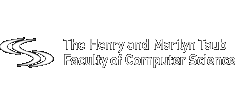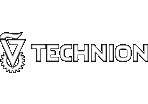Relevant publications
Dr. Brian Chmiel
Loss aware post-training quantization
Neural network quantization enables the deployment of large models on resource-constrained devices. Current post-training quantization methods fall short in terms of accuracy for INT4 (or lower) but provide reasonable accuracy for INT8 (or above). In this work, we study the effect of quantization on the structure of the loss landscape. We show that the structure is flat and separable for mild quantization, enabling straightforward post-training quantization methods to achieve good results. We show that with more aggressive quantization, the loss landscape becomes highly non-separable with steep curvature, making the selection of quantization parameters more challenging. Armed with this understanding, we design a method that quantizes the layer parameters jointly, enabling significant accuracy improvement over current post-training quantization methods.
CAT: Compression-aware training for bandwidth reduction
Convolutional neural networks (CNNs) have become the dominant neural network architecture for solving visual processing tasks. One of the major obstacles hindering the ubiquitous use of CNNs for inference is their relatively high memory bandwidth requirements, which can be a main energy consumer and throughput bottleneck in hardware accelerators. Accordingly, an efficient feature map compression method can result in substantial performance gains. Inspired by quantization-aware training approaches, we propose a compression-aware training (CAT) method that involves training the model in a way that allows better compression of feature maps during inference. Our method trains the model to achieve low-entropy feature maps, which enables efficient compression at inference time using classical transform coding methods. CAT significantly improves the state-of-the-art results reported for quantization. For example, on ResNet-34 we achieve 73.1% accuracy (0.2% degradation from the baseline) with an average representation of only 1.79 bits per value.
Feature map transform coding for energy-efficient CNN inference

Convolutional neural networks (CNNs) achieve state-of-the-art accuracy in a variety of tasks in computer vision and beyond. One of the major obstacles hindering the ubiquitous use of CNNs for inference on low-power edge devices is their relatively high computational complexity and memory bandwidth requirements. The latter often dominates the energy footprint on modern hardware. In this paper, we introduce a lossy transform coding approach, inspired by image and video compression, designed to reduce the memory bandwidth due to the storage of intermediate activation calculation results. Our method exploits the high correlations between feature maps and adjacent pixels and allows to halve the data transfer volumes to the main memory without re-training. We analyze the performance of our approach on a variety of CNN architectures and demonstrated FPGA implementation of ResNet18 with our approach results in a reduction of around 40% in the memory energy footprint compared to quantized network with negligible impact on accuracy. A reference implementation accompanies the paper.
Colored noise injection for training adversarially robust neural networks

Even though deep learning have shown unmatched performance on various tasks, neural networks has been shown to be vulnerable to small adversarial perturbation of the input which lead to significant performance degradation. In this work we extend the idea of adding independent Gaussian noise to weights and activation during adversarial training (PNI) to injection of colored noise for defense against common white-box and black-box attacks. We show that our approach outperforms PNI and various previous approaches in terms of adversarial accuracy on CIFAR-10 dataset. In addition, we provide an extensive ablation study of the proposed method justifying the chosen configurations.
Robust Quantization: One Model to Rule Them All

Neural network quantization methods often involve simulating the quantization process during training. This makes the trained model highly dependent on the precise way quantization is performed. Since low-precision accelerators differ in their quantization policies and their supported mix of data-types, a model trained for one accelerator may not be suitable for another. To address this issue, we propose KURE, a method that provides intrinsic robustness to the model against a broad range of quantization implementations. We show that KURE yields a generic model that may be deployed on numerous inference accelerators without a significant loss in accuracy
Loss aware post-training quantization
Neural network quantization enables the deployment of large models on resource-constrained devices. Current post-training quantization methods fall short in terms of accuracy for INT4 (or lower) but provide reasonable accuracy for INT8 (or above). In this work, we study the effect of quantization on the structure of the loss landscape. We show that the structure is flat and separable for mild quantization, enabling straightforward post-training quantization methods to achieve good results. On the other hand, we show that with more aggressive quantization, the loss landscape becomes highly non-separable with sharp minima points, making the selection of quantization parameters more challenging. Armed with this understanding, we design a method that quantizes the layer parameters jointly, enabling significant accuracy improvement over current post-training quantization methods. Reference implementation accompanies the paper.
Smoothed inference for adversarially-trained models
Deep neural networks are known to be vulnerable to inputs with maliciously constructed adversarial perturbations aimed at forcing misclassification. We study randomized smoothing as a way to both improve performance on unperturbed data as well as increase robustness to adversarial attacks. Moreover, we extend the method proposed by arXiv:1811.09310 by adding low-rank multivariate noise, which we then use as a base model for smoothing. The proposed method achieves 58.5% top-1 accuracy on CIFAR-10 under PGD attack and outperforms previous works by 4%. In addition, we consider a family of attacks, which were previously used for training purposes in the certified robustness scheme. We demonstrate that the proposed attacks are more effective than PGD against both smoothed and non-smoothed models. Since our method is based on sampling, it lends itself well for trading-off between the model inference complexity and its performance. A reference implementation of the proposed techniques is provided.
Towards learning of filter-level heterogeneous compression of convolutional neural networks
Recently, deep learning has become a de facto standard in machine learning with convolutional neural networks (CNNs) demonstrating spectacular success on a wide variety of tasks. However, CNNs are typically very demanding computationally at inference time. One of the ways to alleviate this burden on certain hardware platforms is quantization relying on the use of low-precision arithmetic representation for the weights and the activations. Another popular method is the pruning of the number of filters in each layer. While mainstream deep learning methods train the neural networks weights while keeping the network architecture fixed, the emerging neural architecture search (NAS) techniques make the latter also amenable to training. In this paper, we formulate optimal arithmetic bit length allocation and neural network pruning as a NAS problem, searching for the configurations satisfying a computational complexity budget while maximizing the accuracy. We use a differentiable search method based on the continuous relaxation of the search space proposed by Liu et al. (2019a). We show, by grid search, that heterogeneous quantized networks suffer from a high variance which renders the benefit of the search questionable. For pruning, improvement over homogeneous cases is possible, but it is still challenging to find those configurations with the proposed method. The code is publicly available at https://github.com/yochaiz/Slimmable and https://github.com/yochaiz/darts-UNIQ.




